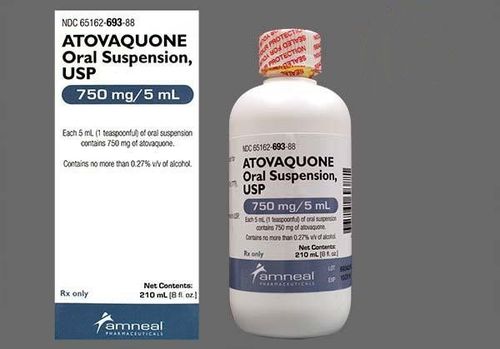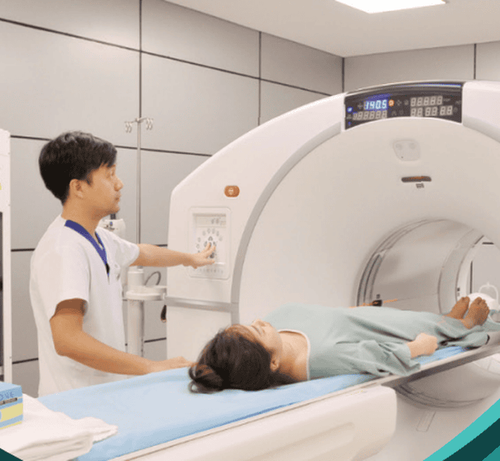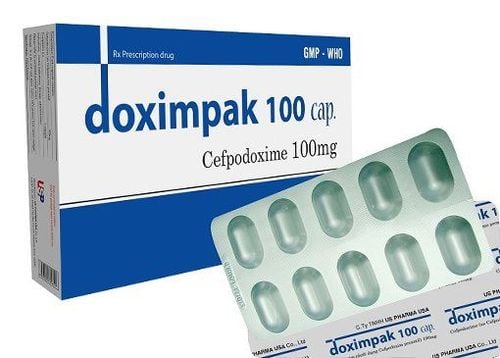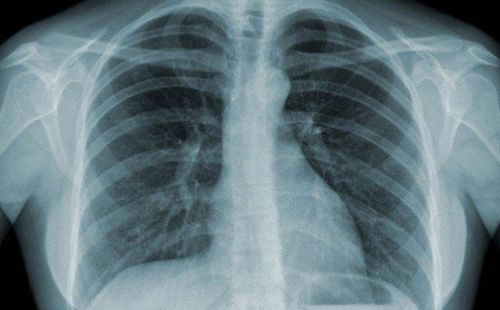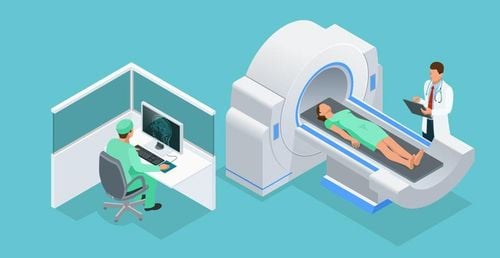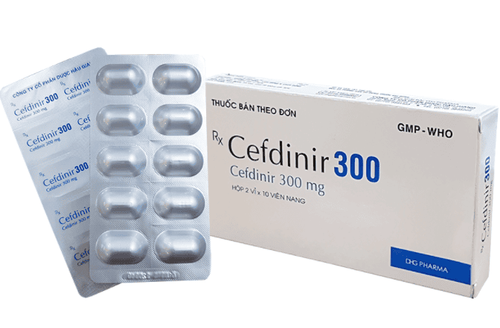This is an automatically translated article.
The article is professionally consulted by Master, Doctor Nguyen Viet Thu - Doctor of Radiology and Nuclear Medicine - Department of Diagnostic Imaging and Nuclear Medicine - Vinmec Times City International General Hospital. Dr. Nguyen Viet Thu has more than 20 years of experience working in the field of diagnostic imaging, former Secretary of the Hanoi Department of Radiology, directing the lower level in the field of Diagnostic Imaging.Diffuse interstitial lung disease is a group of lung disorders that damage the interstitial tissue, which is the connective tissue that forms the supporting structure for the alveoli in the lungs. To diagnose Diffuse Interstitial Lung Disease, different diagnostic techniques are required to determine the cause and stage of the disease.
1. What is diffuse interstitial lung disease?
Diffuse interstitial lung disease (DILD) is a group of disorders that affect the connective (interstitial) tissue, which is the connective tissue that forms the supporting structure for the lungs. alveoli in the lungs.In a normal lung, the alveoli fill with air during inspiration. The process of gas exchange takes place in the alveoli, is the diffusion of oxygen (O2) from the alveoli into the pulmonary capillaries and carbon dioxide (CO2) in the opposite direction, then CO2 goes out of the body when you exhale. . When affected by diffuse interstitial lung disease, the tissues that support the alveoli become inflamed and stiff, making it difficult for the alveoli to fully expand. These abnormal interstitial spaces affect the supply of oxygen to the body and the removal of carbon dioxide from the body. As interstitial lung disease progresses, supporting tissues form scarring and thicken the alveolar walls, further reducing lung function. In some cases, the inflammatory lesion may be limited to one or more areas of the lung; in some cases, the diffuse inflammatory lesion occurs in both lungs.
Diffuse interstitial lung disease can be classified based on etiology, association with other diseases, or acquired disease. Diffuse interstitial lung disease may be associated with autoimmune or inflammatory diseases such as: Rheumatoid Arthritis Systemic sclerosis Polymyositis and Dermatomyositis Lupus systemic erythema (SLE) Inflammatory bowel disease (Crohn's disease, ulcerative colitis) It can also be caused by exposure to drugs, such as:
Chemotherapy Antiarrhythmic drugs (used to treat rhythms) irregular heartbeat) Statins (used to lower blood cholesterol) Antibiotics Diffuse interstitial lung disease can also result from inhaling substances, such as:
Asbestos Silica Chemicals Animal proteins Smoke Diffuse interstitial lung disease is associated with Secondhand smoke inhalation can occur when the airways are damaged such as bronchiolitis-interstitial lung disease and Desquamative Interstitial Pneumonia (DIP).
In some cases, diffuse interstitial lung disease may involve a collection of inflammatory cells (granulomas), as in sarcoidosis.

In addition, there are many other causes of diffuse interstitial lung disease. In some cases, the cause of this pathology is also not found. Occasionally, diffuse interstitial lung disease is associated with familial causes or specific genetic disorders.
The most common symptoms of diffuse interstitial lung disease are shortness of breath and dry cough. As the disease progresses, symptoms such as weight loss, muscle and joint pain, and fatigue may also occur. In more advanced stages, the patient may develop an enlarged heart, enlarged fingers, cyanosis of the lips, blue skin, and brittle fingernails due to reduced oxygen levels in the blood. In addition, patients may also experience non-respiratory symptoms, such as muscle pain, joint pain, and thickening of the skin, especially when the patient has an autoimmune disease.
2. How is diffuse interstitial lung disease diagnosed and evaluated?
To determine the cause of diffuse interstitial lung disease, your doctor may perform a physical exam and order the following diagnostic techniques, including:Blood tests: These tests can help identify autoimmune conditions, such as scleroderma and rheumatoid arthritis, that may be associated with diffuse interstitial lung disease. Spirometry: This is a lung function test in which the patient exhales quickly and forcefully through a tube connected to a machine that measures how much air the lungs can inhale and how quickly air moves. moving in and out of the lungs. Spirometry can help determine if there is a problem with air entering the lungs (ventilation limitation, such as fibrosis) or air leaving the lungs (obstruction, such as asthma). Pulse oximetry: This test uses a small device placed on the fingertip to measure the oxygen saturation in the blood. This device shines a specific wavelength of light at the fingertip to measure the amount of oxygen but does not cause pain to the patient. Chest X-ray: Lung lesions associated with different types of interstitial lung disease are often identified on chest X-rays. Chest X-rays may also be used to monitor the progression of diffuse interstitial lung disease.

3. Treatment of diffuse interstitial lung disease
Drugs and Treatment Once lung scar tissue is present, it is irreversible to return to normal lung tissue and there is no current treatment to stop the progression of diffuse interstitial lung disease. However, the goal of medication and treatment is to temporarily improve symptoms and potentially slow current progress to some extent in an effort to improve quality of life.The main treatment of diffuse interstitial lung disease includes avoiding exposure to inflammatory agents, suppressing inflammation using systemic corticosteroids in symptomatic or progressive patients, and treating complications. and supportive care. Sometimes, corticosteroids are given with an immunosuppressant (eg, cyclosporine) as the first line of treatment, however, long-term effectiveness has not been demonstrated. Oxygen therapy helps patients breathe and exercise, and it also prevents or reduces the likelihood of complications secondary to hypoxia. In addition, patients need to prepare personal oxygen tanks and always keep them at home or carry them with them when leaving the house.

Organ transplantation For young people with severe interstitial lung disease or unresponsive to treatment, a lung transplant may be an option of last resort.
Lifestyle modifications Patients should be counseled about options to quit smoking, including smoking cessation therapies and programs, and avoidance of passive smoking. Following a nutrient-dense diet containing adequate calories is imperative, as people with lung disease are prone to weight loss secondary to burning extra calories spent breathing. Patients should also be vaccinated to protect against respiratory infections that are likely to worsen symptoms of diffuse interstitial lung disease. Therefore, sick people should get a pneumonia shot and a flu shot every year. Note, avoiding illegal drug use can prevent some drug-induced lung diseases.
Vinmec International General Hospital with a system of modern facilities, medical equipment and a team of experts and doctors with many years of experience in medical examination and treatment, patients can rest assured to visit. examination and treatment at the Hospital.
Please dial HOTLINE for more information or register for an appointment HERE. Download MyVinmec app to make appointments faster and to manage your bookings easily.
Reference sources: radiologyinfo.org, uspharmacist.comSEE MORE
Idiopathic pulmonary fibrosis: What you need to know Overview of common lung diseases What does a persistent dry cough warn of?





